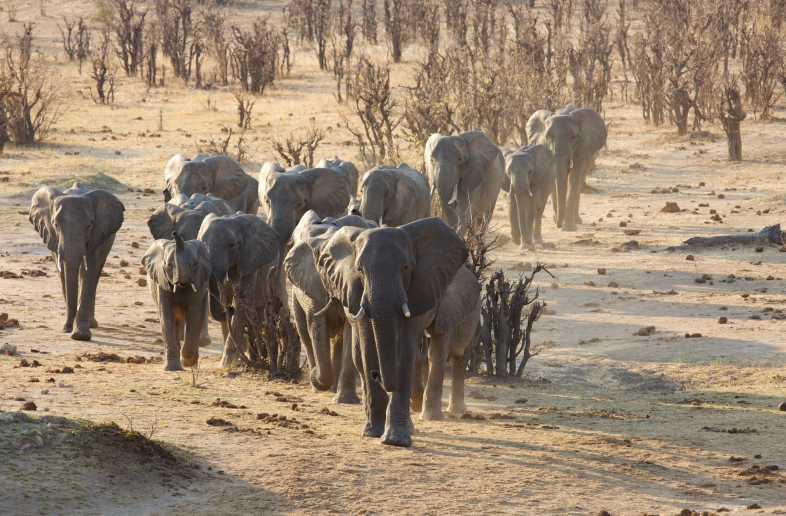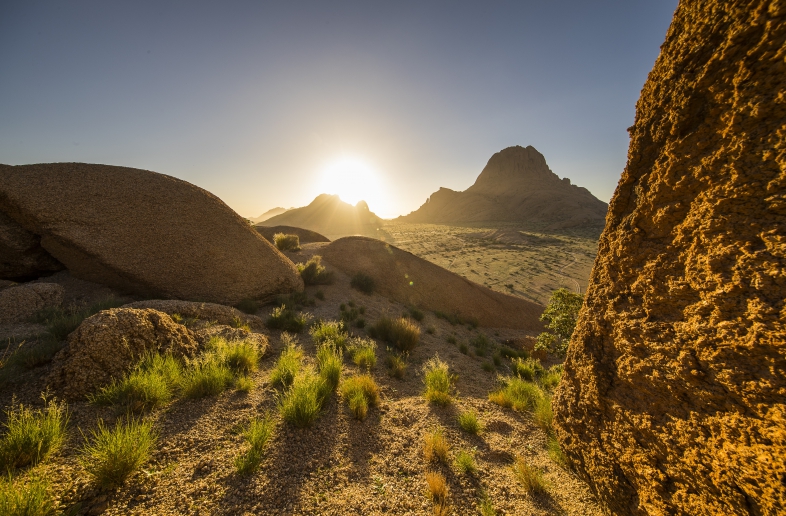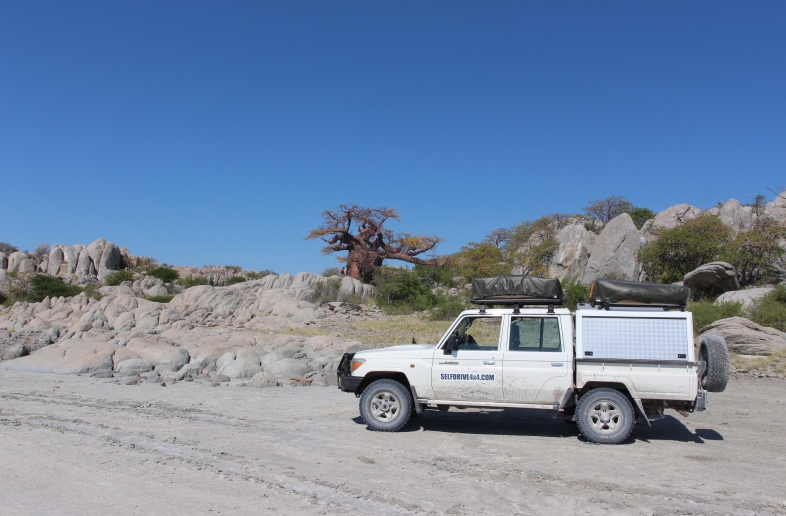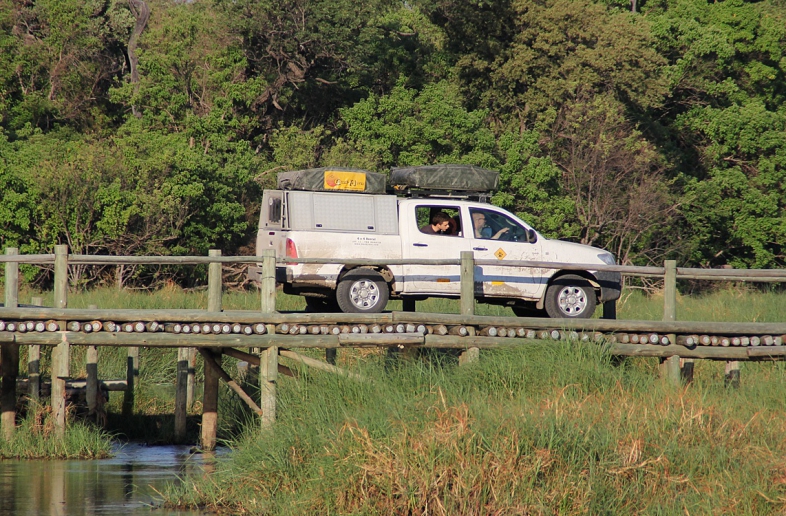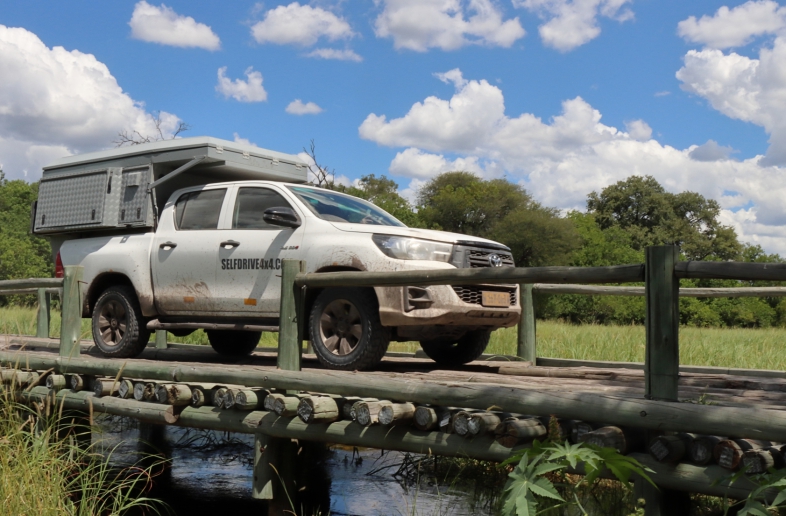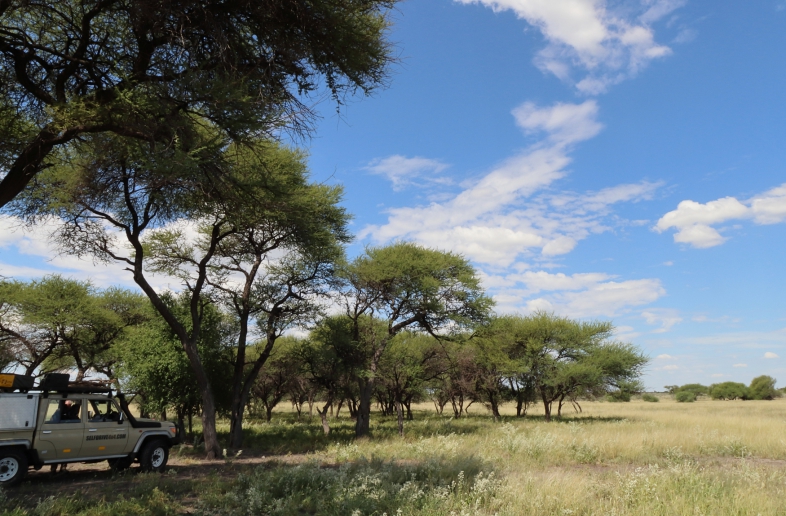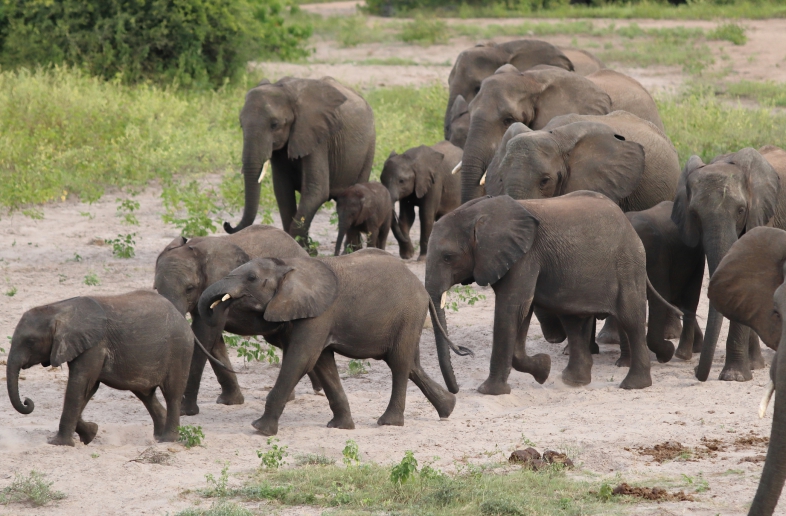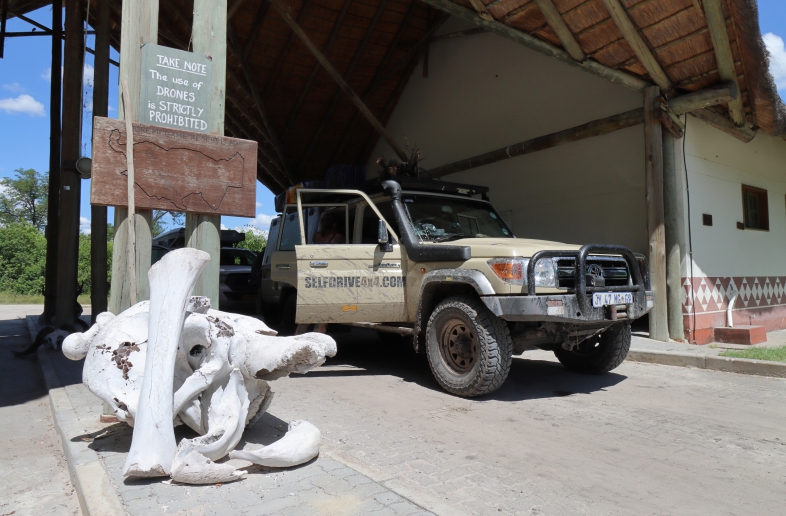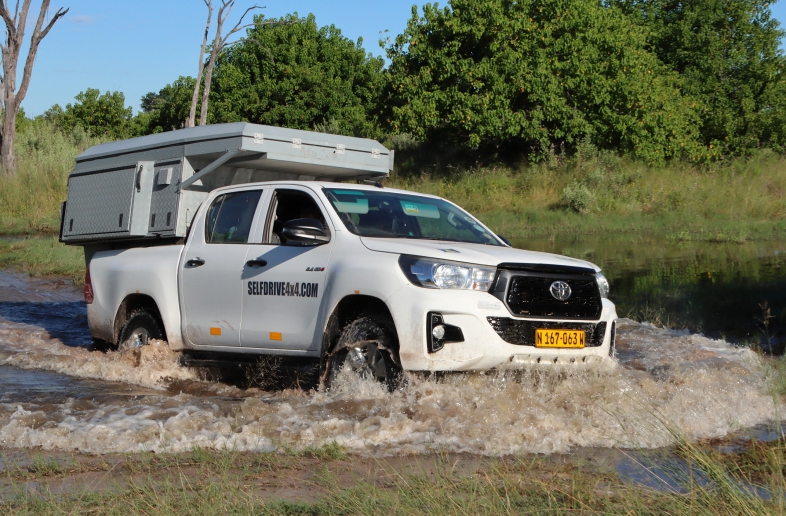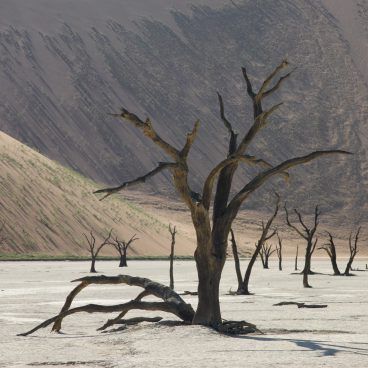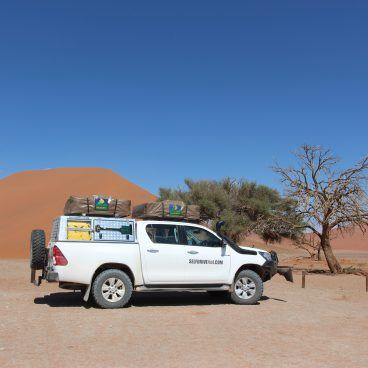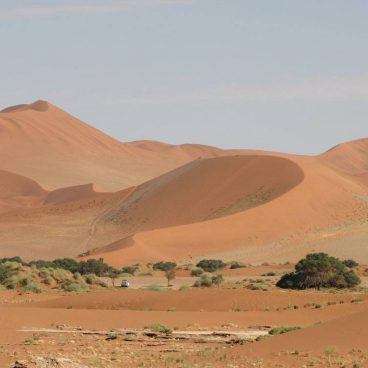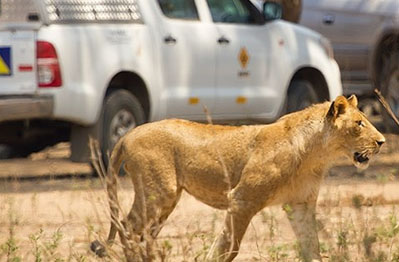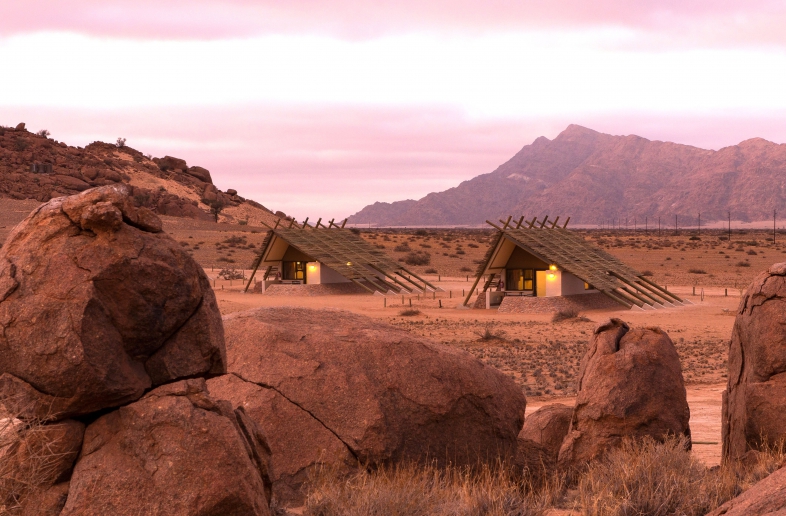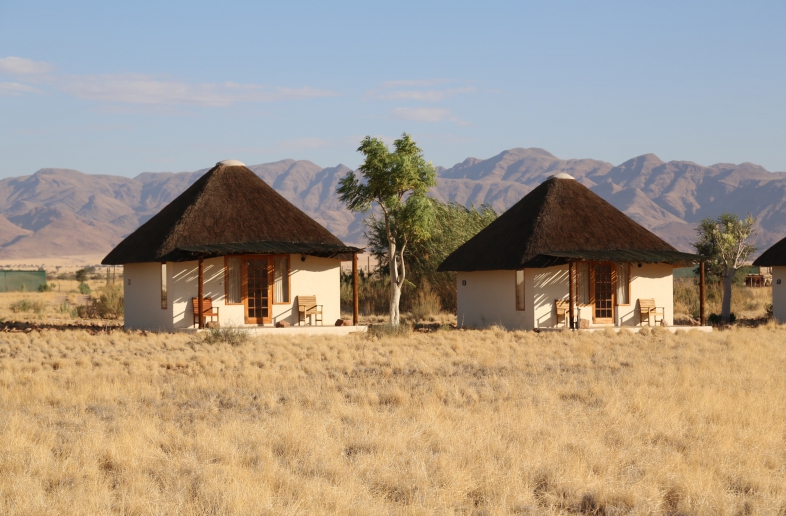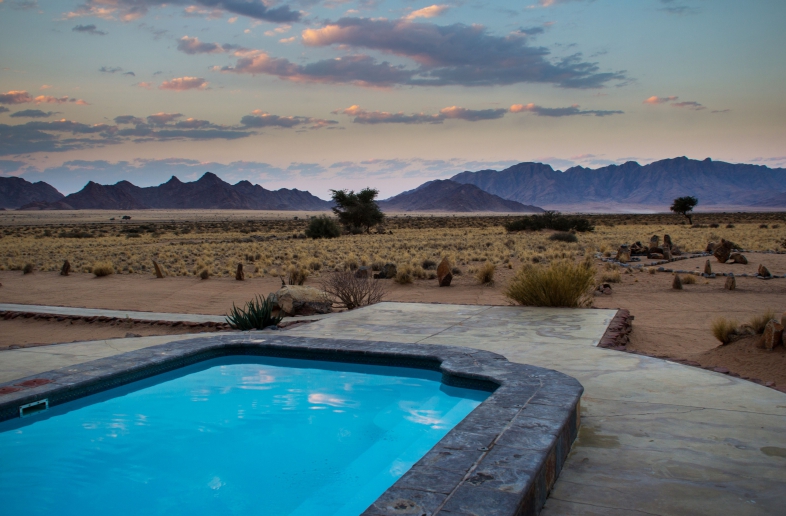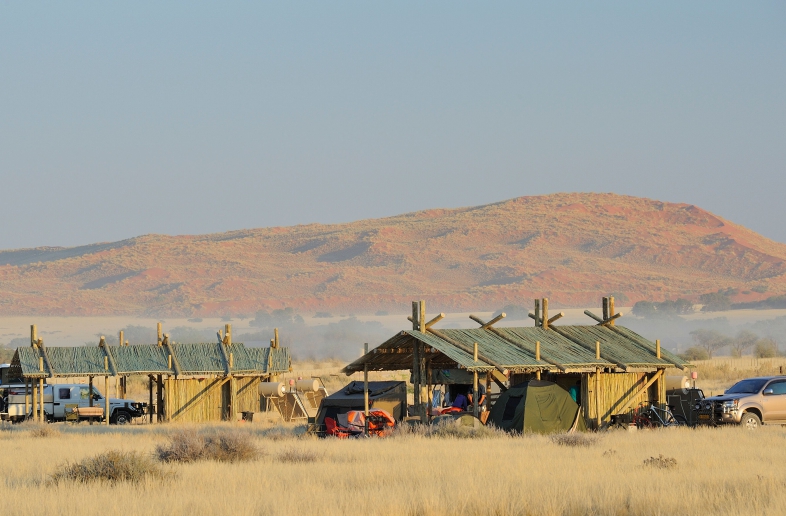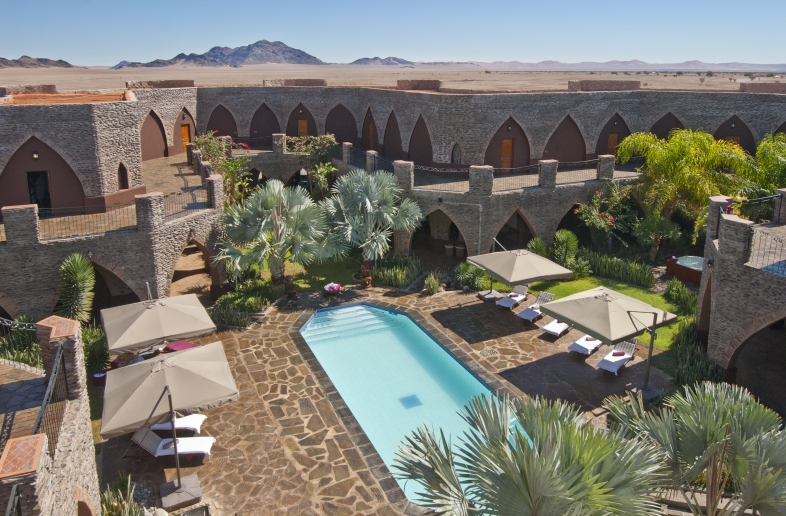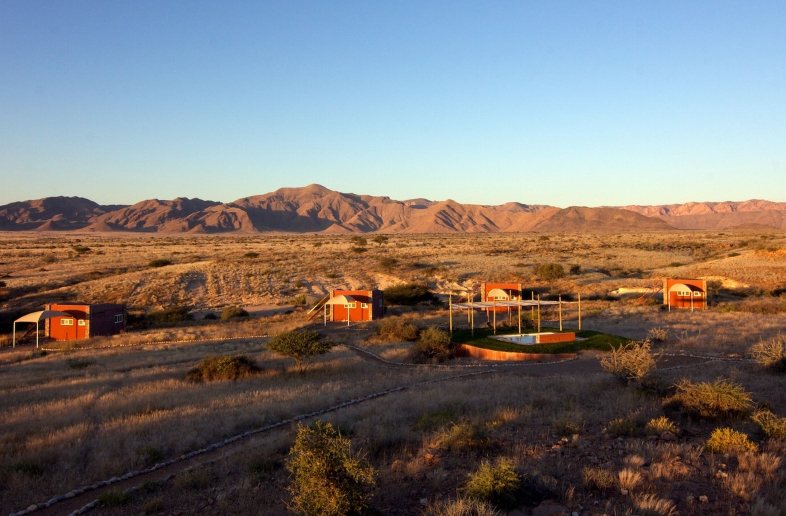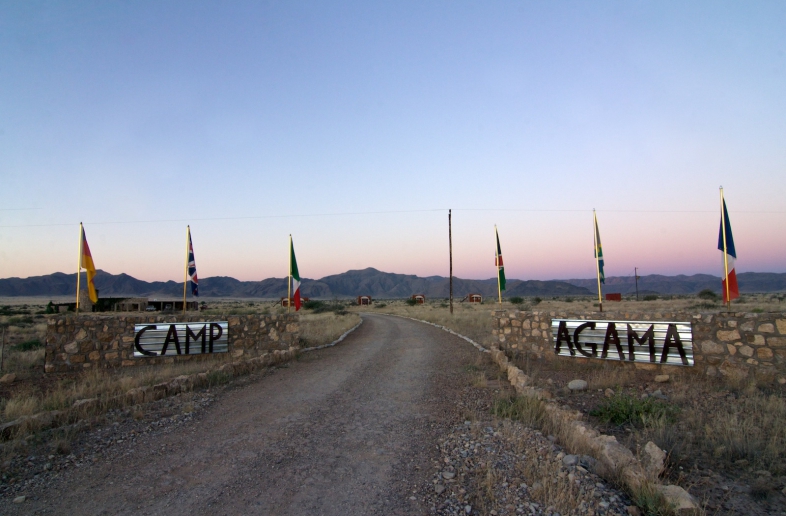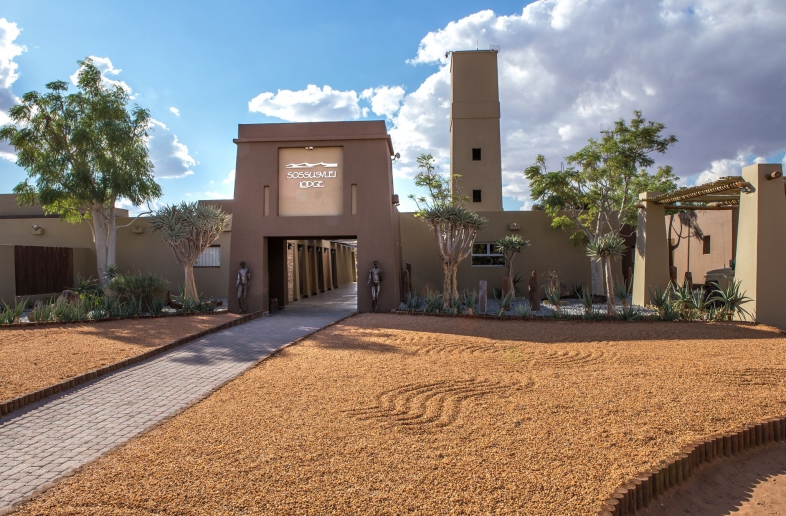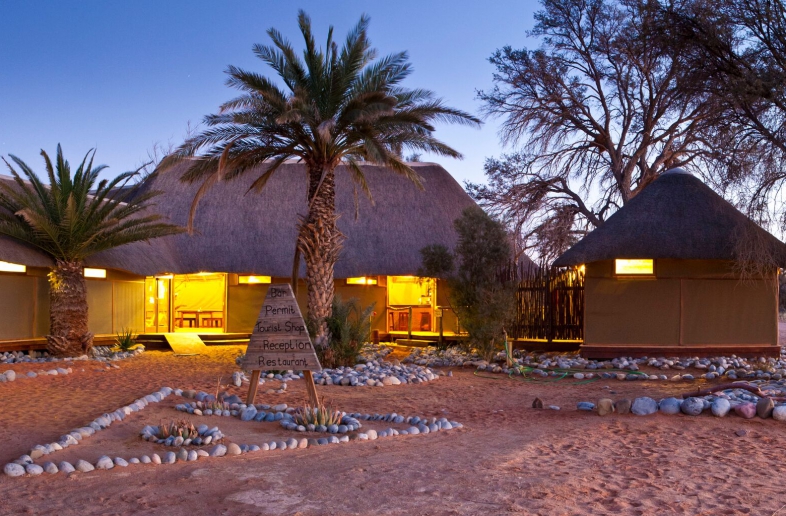Sossusvlei / Sesriem
Even if you’re not a romantic, the Soussusvlei’s hugem star-shaped dessert dunes, which rise dramatically 1000 feet above the surrounding plains and sprawl like massive pieces of abstract sculpture, are guaranteed to stir your soul and imagination.
The landscape has continously shifting colours – from yellow-gold and ocher to rose, purple and deep red – that grow paler or darker according to the time of day.
The dunes have their own distinctive features, ranging from the crescent-shape barchan dunes – which migrate up to 2 or 3 yards a year, covering and uncovering whatever crosses their path – to the spectacular, stationary start-shape dunes, formed by the multidirectional winds that tease and tumble the sands back and forth.
Sossusvlei, 60kms south-west of Sesriem, is a journey of 1 hour 15 minutes by car. The sand dunes are best seen immediately after sunset. The crested dunes at Sossusvlei are known as ‘star dunes’. These dunes are sometimes as high as 325 meters above the Tsauchab River. West of Sossusvlei is a 60 km wide belt of linear dunes that form the largest area of the Central Namib sand sea.
One of the most fascinating aspects of the Namib is the way in which life forms have adapted to the hostile environment. The Desert Ecological Research Unit, on the banks of the Kuiseb River at Gobabeb, is open to the public only once a year. For those with an interest in ecology, this region will present a multitude of new and interesting facts.
Sossusvlei means ‘the gathering place of water’ in the local nama language; oddly in good years seasonal rains in the foothills of the Naukluft and Tsaris Mountains succeed in reaching the vleis, creating temporary lakes. The seemingly uniform red-gold sands have another name: ‘The Sand Sea’.
Rainfall at the coast averages dramatically less than 50mm a year, and further inland it measures a paltry 50-100mm annually. Despite this the lack of vegetation, a surprisingly diverse array of insects, reptiles and rodents make their home here – surviving thanks part to the coastal fog that creeps up off the sea each dawn and penetrates up to 50km inland. Larger desert-adapted wildlife such as ostrich, springbok, gemsbok, bat-eared fox and aardwolf, are found here, and a variety of birds include the aptly named dune lark, who is completely dependant on these sands and thus endemic to the area.
When visiting the Sossusvlei you will stay in the town Sesriem. A good place to refuel and go for groceries.
Several Selfdrive4x4.com trips include Sesriem and the Sossusvlei.

